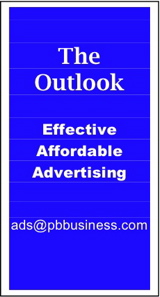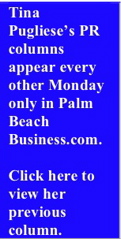Getting Published
By Tina L. Pugliese, APR, Pugliese Public Relations
 Probably the most frustrating aspect of public relations work at any level is translating your news release, feature story, or idea into a published article. Fortunately, there are a number of hints that can help you see that release make it into a newspaper, magazine or online publication.
Probably the most frustrating aspect of public relations work at any level is translating your news release, feature story, or idea into a published article. Fortunately, there are a number of hints that can help you see that release make it into a newspaper, magazine or online publication.
1. Match your release or article to the publication. A telephone call to the news desk can get you guidelines and suggestions that will indicate the types of stories the editor is willing to publish.
2. Read the masthead to determine the appropriate editor to contact. An article addressed blindly to "The Editor" frequently will be thrown away.
3. Read the publication. See what department or sections it has, how it is structured, how long the articles are, how they are written, and whether the publication has special or seasonal supplements that may be an outlet for your story idea.
4. Call or e-mail the editor to see if your idea has merit. Keep your call or e-mail brief and to the point. If the editor expresses interest, follow-up. Deliver your news release or information to the individual the editor has suggested.
5. Target your article to a local issue or trend.
6. Know the deadlines. Allow time for the editor or writer to ask questions before the deadline rush. All publications--daily newspapers and weeklies — and electronic media have strict deadlines.
7. Think of visual illustrations that can accompany your article. A photograph, chart, or illustration sometimes can help get the article published. If a photograph is supplied, provide a caption that identifies people. Provide credit lines if appropriate.
8. Develop a news angle that is exciting or has local impact. Write about 10 trends in the your industry or five forecasts for the future or what advancements people can expect in the coming year. Do something that is exciting and will separate your article from competing stories on the editor's desk.
9. In writing your article — Think. A "fluff" story will be immediately identified. Develop factual stories. A credible authority will add power to the story.
10. Weave your organization into the body of the article.
11. From initial contact to publishing, remember, the editor is a professional and knows the publishing business. Good public relations professionals will see their articles in print. Successful public relations practitioners will get their names and addresses in an editor's file for future questions.
Tina L. Pugliese, APR is an executive coach and counselor for Pugliese Public Relations, a communications firm in Boynton Beach, Florida. Pugliese is an accredited member of the Public Relations Society of America, and is the author of the book, Public Relations for Pharmacists, and e-books, Marketing Your Business for Success, How To Work With The Media, and Public Relations Manual — A Guide for Entrepreneurs. She can be reached at (561) 889-3575 and by email at Tina@PugliesePR.com. Her web site is www.PugliesePR.com.
Article excerpted from e-book, Public Relations Manual — A Guide for Entrepreneurs, by Tina L. Pugliese, APR.





